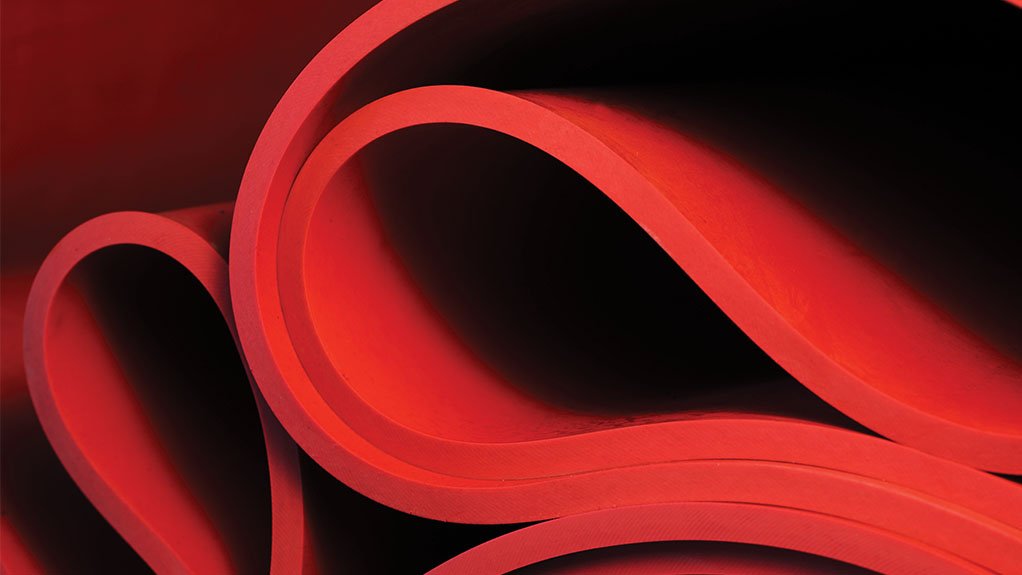Rubber lining is a highly skilled process which, when done correctly with the correct type and thickness of rubber, can contribute considerably to the life and profitability of a plant, affirms Weir Minerals Africa product manager: rubber products, hoses and spools Yatheen Budhu.
Budhu notes that there is no single lab test to ensure that the correct product is selected for a particular application, especially for the mining sector. “The industry standard test for rubber materials is the ISO 4649 dry abrasion test; however, most wearing materials on a mine exist in a wet environment.”
“For this reason, our Weir Minerals specialists developed a modified version of the ISO 4649 test, the Wet Abrasion Resistance Index (Wet ARI) test which can be used for wet abrasion testing and is better matched to what actually happens on the mine. The test was developed specifically to replicate wet slurry wear conditions for elastomers and over many years of testing has become the standard by which we can predict the wear of not only our rubber, but that of our competitors and then rank these side by side,” explains Budhu.
The company’s Wear Testing Programme includes tests such as the Weir Coriolis test, which is particularly suited for mill pumps, as well as the Wet ARI test. Budhu highlights the proven ability of natural rubber to withstand abrasion, especially when its composition is close to the natural latex found in the rubber tree.
“Each additional step in the production of rubber can damage its molecular chains and compromise the raw natural rubber’s excellent abrasion resistance,” he explains. “Through our unique liquid phase compounding process, we ensure that our premium rubber retains the essential properties of raw natural rubber and this allows it to deliver excellent wear life.”
Linatex rubber is recognised for reducing long-term wear caused by fine particles, including the wet and abrasive conditions in mining, and is especially suitable for low angle applications such as the lining of pumps, piping, hoses, chutes, valves and tanks.
Where coarser materials are involved, Weir Minerals offers its Linar range of natural rubber compounds, which also resist deformation while providing anti-stick properties. The material combines high flexibility with excellent resistance to cutting, says Budhu.
“The choice of liner solutions goes beyond natural rubber to include synthetic rubbers,” he says. “The latter are formulated to be used where corrosive chemicals and high temperatures become a factor.”
For these applications, Weir Minerals developed its Linagard range of synthetic rubbers, which can withstand the effects of leaching acids and hydrocarbons, as well as slurries which are hotter than 70 ⁰C.
EMAIL THIS ARTICLE SAVE THIS ARTICLE
To subscribe email subscriptions@creamermedia.co.za or click here
To advertise email advertising@creamermedia.co.za or click here













